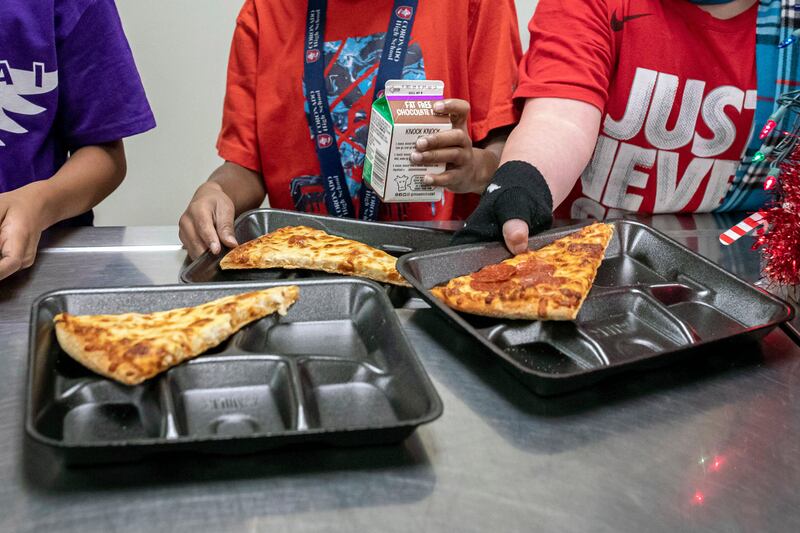School lunches may soon get a makeover that targets the amount of sugar and salt in meals.
If adopted, the changes would begin in time for the 2024-25 school year.
CNN described the proposal this way, noting that “chocolate milk is in, but for the first time ever, at least some added sugars will be out — and sodium levels will be reduced gradually.”
The U.S. Department of Agriculture’s Food and Nutrition Service is proposing updates to school nutrition standards. In an announcement two days ago, it said the “proposed updates reflect the most recent Dietary Guidelines, as required by law, and build in plenty of time for planning and implementation to ensure the school meals community and the kids they serve have the best chance for long-term success.”
Experts say meals would be healthier and could help head off some chronic health conditions, including obesity, heart disease and diabetes.
Agriculture Secretary Tom Vilsack announced the proposed changes Friday. He said at least 15.3 million children get breakfast at school each day and almost twice that many get school lunch, at 29.6 million.
School meal programs receive federal funds so that students get balanced, healthy meals at low or no cost. In the program, some schools offer school lunch and some also offer breakfast.
“The purpose of this is to improve the health and welfare of our children. And I think everybody who comes to this issue shares that goal and hopefully, collectively, we can make sure it happens,” Vilsack separately told CNN.
The meal proposal
Added sugars would be reduced in two stages, limited first in specific super-sweet products like yogurt and cereal, before reducing weekly amounts in meals.
Salt levels would also gradually be reduced.
The changes would impact a lot of what’s consumed at school. For milk, two proposals are being considered. One would allow only unflavored milk for grades k-8 and let older kids choose between flavored and unflavored. The alternate proposal would allow only unflavored milk for grades K-5, and open up flavored or unflavored options after that. In either case, as now, the milk products would be low-fat or fat-free.
Among other proposed changes:
- Sugar limits for grain-based desserts, breakfast cereals, yogurt and flavored milk.
- Salt levels would be reduced, though there are two options on the table for how much.
- Whole-grain products would be offered, with occasional non-whole, enriched grain products.
- In programs for American Indian and Alaska Native students, vegetables could be served in place of grain requirements, among other changes, including allowing traditional foods to be part of the menu.
A May 2022 report by the USDA said that 92% of school breakfasts exceed the recommendation that added sugar make up less than 10% of calories consumed. And that’s true of 69% of school lunches, as well, the report said.
“We’re proposing these changes now to build in plenty of time for planning and collaboration with all of our school nutrition partners,” said Stacy Dean, deputy undersecretary for Food, Nutrition and Consumer Services, in a statement. “Implementing the final school nutrition standards will require the support of schools and state agencies.”
The timeline
The agency has published a timeline showing when the changes, if adopted, would take place, starting in fall 2024, when the whole-grain requirements would go into effect. In fall 2025, added sugars would be limited on yogurts, cereal and other high-sugar products. That’s when the changes to milk would be in place, as well. And sodium intake would be reduced by 10% for school breakfast and school lunch.
The changes are more drastic thereafter.
In fall 2027, added sugars would be limited to less than 10% of calories per week for school meals. And sodium limits would be reduced another 10%. In fall 2029, that level would drop another 10%.
According to NPR, “The National Milk Producers Federation and the International Dairy Foods Association voiced support for the new proposed updates, particularly the plan to keep low-fat flavored milk in cafeterias.”
The article said, however, the School Nutrition Association wants the existing standards enforced, instead of a new set of rules.
“Many of the current school meal standards, originally put in place during the Obama administration, were waived during the pandemic in order to give schools flexibility with what they could serve as they faced supply-chain crunches,” NPR said.
Those waivers will expire in June.
The comment period is open through April 10. Comments can be submitted directly to the agency.


